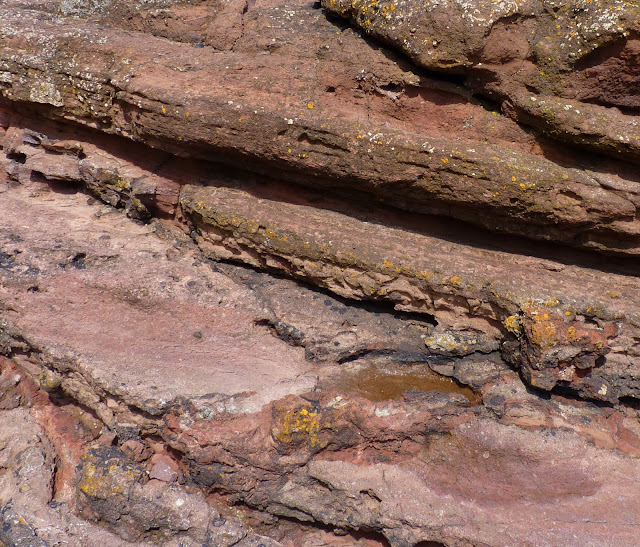 |
| Seacliff, East Lothian, further along the beach........... |
 |
| Seabirds nesting on the cliffs. |
 |
| Ruined 14th century Tantallon Castle. |
 |
| Red sandstone rock. |
 |
| This small bay opposite Bass Rock is known as Saint Baldred's Cradle. In the 8th century the early Christian monk Saint Baldred is said to have landed on this shore. |
 |
| Bass Rock,looking north over the Firth of Forth,to the coast of Fife. Bass Rock was once the home of Saint Baldred,who built a hermitage and chapel here. Later the island housed a castle and prison and has been featured in many works of fiction. The lighthouse, built in 1902,was designed by David Stevenson, uncle of the writer Robert Louis Stevenson. Today Bass Rock is best known for it's large ganet population (around 150,000 birds). Other species found here are guillemot,razorbill,cormorant,puffin,eider duck and many gulls. |
 |
| A closer view. I like the way the passing container ship mirrors the shape of the lighthouse. The white spots on the rocks are seabirds, and their droppings. |
 |
| Bass Rock in the 19th century. Image source : Wikipedia. |

















